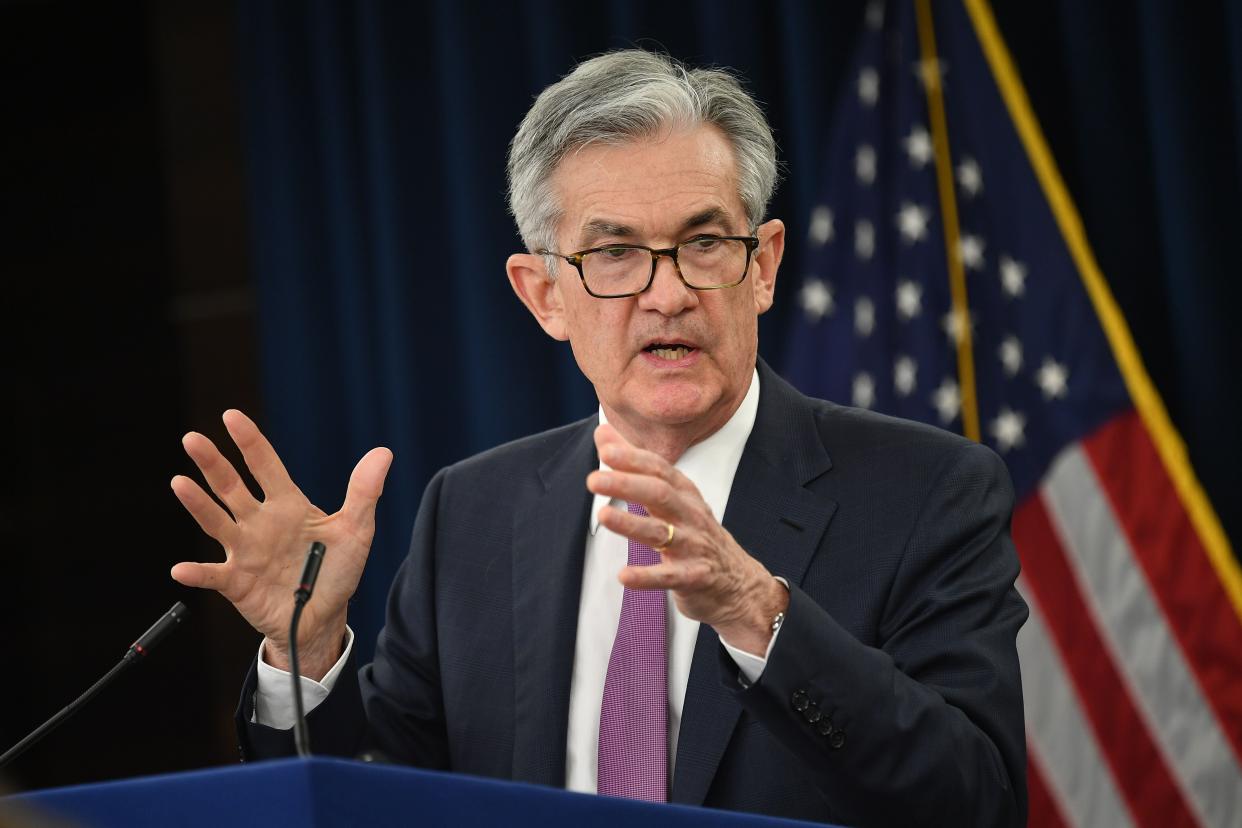Three reasons why it’s too early to call for Fed rate cuts this year: Goldman Sachs

While Goldman Sachs acknowledges the trade war risks, the firm outlined three key reasons why it's too soon to call for Fed rate hikes this year.
“Because of the downside risks to growth, we have sharply raised our subjective probabilities for Fed rate cuts,” Goldman economist Jan Hatzius explained in a note Sunday. “But while it is a close call, the outlook has not yet changed enough for cuts to become our baseline forecast.”
First, those that are calling for a rate cut this year are focused on the second half and not the upcoming June meeting. “This means that the committee still has some time to make up its mind whether the outlook has really changed by enough to warrant cuts—time that could well see a number of twists and turns in the trade policy debate and financial conditions,” Hatzius wrote.
Second, Hatzius said that in his view the financial conditions in the U.S. have only moderately tightened. However, even if conditions tighten in response to Fed policy, Hatzius expects that those moves might be relatively limited. “While a straight read of the short-term interest rate futures suggests nearly 100bp of easing priced through next fall, some portion of this likely reflects the hedging value of long rates positions for cross-asset investors, i.e. a negative term premium rather than an expectation of a large cut,” Hatzius explained.
Third, the economy should be able to handle a limited degree of Financial Conditions Indicator (FCI) tightening. “The move so far has been only one-third as large as in the fourth quarter of 2018 and less than one-quarter as large as in the 2015/early 2016 episode. Even if we scale up the recent shift by another 20-30bp, it would still fall well short of the earlier episodes, neither of which pushed growth clearly below potential,” according to Hatzius.
Goldman Sachs revised its trade war prediction and now expects a 10% tariff by July on both $300 billion worth of Chinese goods and also on all Mexican imports. However, Hatzius also believes that by the end of this year or early next year, an eventual deal with both China and Mexico could result in the removal of the tariffs.
Probability of a rate cut
As uncertainty surrounding the trade war persists, the market has increased the probability of a Fed rate cut in either the June or September Federal Open Market Committee (FOMC) meeting. According to the CME FedWatch tool, the probability that the Fed cuts its target rate to 2%-2.25% is now at 27.5%. One month ago, that probability was just 6.7%.
Other Wall Street firms have recently revealed that they expect rate cuts on the horizon, specifically towards the end of this year.
“We now look for 75bp of rate cuts this year beginning in September,” Barclays wrote in a note Friday. Moreover, JPMorgan expects “two 25bp reductions in the federal funds rate target, in September and December,” according to economist Michael Feroli.
Hatzius admits that there is no question that the chances of rate cuts through the remainder of this year has spiked, but he remains loyal to his contrarian view.
“There are several ways in which our decision to buck the trend toward forecasting rate cuts could prove ill-advised,” Hatzius said. “Perhaps the US-China escalation will continue until the impact on business confidence and financial conditions is sufficiently severe to force a change, including in the FOMC’s policy. So we will continue to evaluate our view in light of changes in the economic data, the policy environment, and financial conditions, and make changes as appropriate.”
In addition, investors will be paying close attention to important Fed speeches scheduled for this week. The Fed will be kicking off its Monetary Policy Strategy, Tools, and Communication Practices Conference in Chicago. Fed Chairman Jerome Powell will be speaking Tuesday at 9:45 a.m. ET, and Vice Chairman Rich Clarida is scheduled to speak Wednesday at 9:45 a.m. ET.
—
Heidi Chung is a reporter at Yahoo Finance. Follow her on Twitter: @heidi_chung.
Follow Yahoo Finance on Twitter, Facebook, Instagram, Flipboard, LinkedIn, and reddit.
More from Heidi:
Chipotle exec: Tariffs could lead us to raise prices 'about a nickel on a burrito'
Walmart is catching up to Amazon in the online grocery wars: Citi
Here’s what the $605 billion global snack market looks like
Chipotle downgraded on concerns over African swine fever impact
Fast food needs to beef up delivery to stay relevant: Wells Fargo


